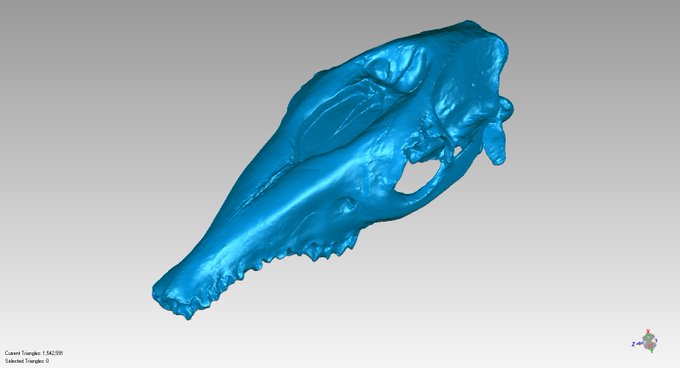I ❤️ marsupials, especially weird fossils, but I can't deny they aren't as diverse as placentals. Our new@RSocPublishing paper, out today & led by @grumpyDrFabre, uses jaw shape to show they also evolve more slowly, likely due to developmental constraints https://t.co/8GbDV2GarN
Our new paper is out @PLOSBiology! The broadest 3D study of #dinosaur & #bird skull diversity to date, sampling 391 species including @NHM_London stars #Dippy & #Sophie, we show that skull evolution slowed down dramatically as birds took off. Check it out: https://t.co/O6bK6J9hc1 https://t.co/qz45SCGIa3
@NHM_Digitise @jeff_streicher @DeepakVeerappan @NHM_London @Simon_Maddock @varad_giri @wolfgangwuster @ZSLScience @nickcasewell @BangorHerpSoc @HeadLab_Camb @EvolEyes @akiopteryx We then use those detailed data to reconstruct which parts of the skull evolve quickly (red dots) or more slowly (blue dots) & how different skull shapes relate to diet & habitat. In snakes, the fastest & most extreme changes happen in the parts that control opening their mouths!
@NHM_Digitise @jeff_streicher @DeepakVeerappan @NHM_London @Simon_Maddock @varad_giri @wolfgangwuster @ZSLScience @nickcasewell @BangorHerpSoc @HeadLab_Camb @EvolEyes To make this high resolution estimate of the ancestral snake, @akiopteryx digitised ~1000 landmarks on over 180 skulls of living and extinct snakes, lizards, and their close relatives to analyse how the shape of the skull has evolved over 200 million years #WorldSnakeDay
Excited for today’s #2018SVP #DigitalPaleo symposium by @akiopteryx & @BeekGeak! Come to Ballroom C at 9:30am for lab member Carla Bardua’s talk about her PhD work on high-density phenomic analyses of the amphibian skull & hear more about how we collect & analyse data like this:










